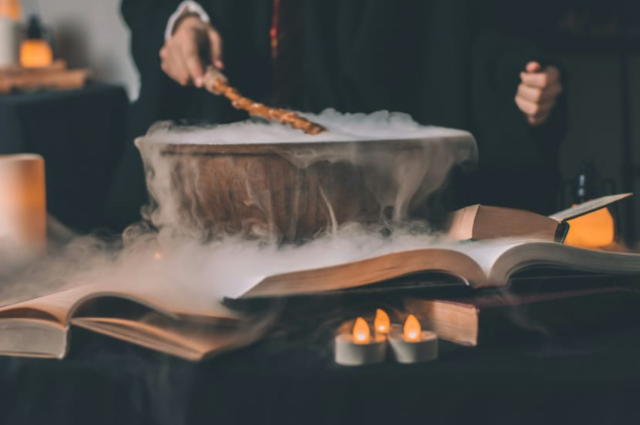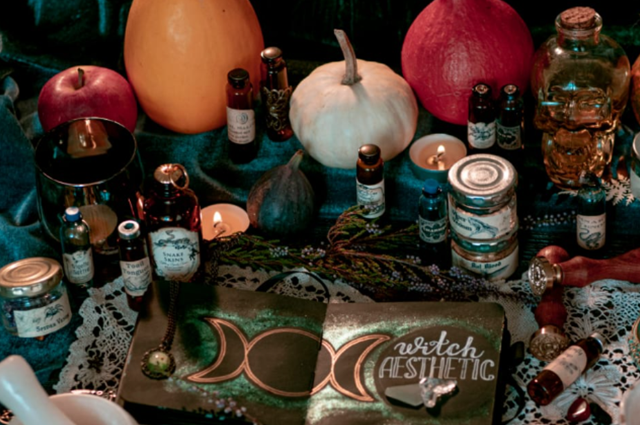
The Land Where Magic Meets Mysticism
Amidst the heart of northeast India, lies a state where nature shines at its best, where the residents swear by tea, and where just a single beat of Bihu is enough for the people to dance their hearts out. It's none other than the state of Assam. Moreover, in this culturally enriched state, there exists a place that is believed to be a land of mysticism and secrets.
As various personas refer to it, the Black Magic Capital of India, or Mayang, is an area located on the banks of the Brahmaputra River in the Morigaon district of Assam. Mayang is about 40 km from Guwahati, aka the Gateway to Northeast India.
But why the name Mayang?
There are many legends and proverbs associated with the name of Mayang. The most notable of these are provided below.
- Some people believe that the name Mayang comes from the word 'Maya' This is because the region has been considered the 'land of illusion' for its magic since ancient times.
- According to some other people, the Dimasa people of the Maibang tribe came and settled in Mayang when the whole of northeastern India was part of Assam. This mountainous region was inhabited by elephants at that time. The Dimasa word 'Mayong' means elephant. Therefore, the name 'Mayang' is derived from this word.
- As per another legend, the name Mayang means part of the goddess Shakti. 'Ma' means Goddess of Power and 'Yang' means part.
What makes Mayang so special?
According to historical evidence, human sacrifice was practiced in the pursuit of energy until early modern times in the village of Mayang. Recent excavations have yielded swords and other sharp weapons that bear similarities to weapons used in human sacrifices in other parts of the country. Indian archaeologist K.S. Manjul described these weapons as “The swords are hugely similar to what were used in human sacrifice in other parts of the country. The villagers too told us their forefathers used to talk about human sacrifice that might have taken place in the Ahom era in Mayang. At present the ritual of animal sacrifice is prevalent in Mayang as it is in other Shakti Shrives in the state. But we need to find out more evidence to conclude.”
Legends have important references to ancient Pragjyotishpur including Mayang regarding the use of magic. For example, Maharaja Ghatotkacha of the Kachari kingdom is known to have used magic in the battles of the Mahabharata. In early times, Mayang was very famous for its use of magic spells. There are several tales about this.
There are cases of people covering huge distances in an extremely short period by the power of mantras; brass bowls sticking to the backs of people; stools sticking to the bodies of guests, etc. People from far and wide come to this area to learn magic. With a few exceptions, most mantras were passed on orally. To conserve the legacy of this mystic land, a museum has also been set up in the place. The museum is mainly an attempt to preserve the magical civilization and heritage of Mayang.
Going back to where it started

There is no doubt that tantra and mantra were practiced in Mayang as it was practiced in Kamakhya. It is not far from Kamakhya to Mayang by river, only 30 km away. The tantriks of Kamakhya who practiced mantras may have come to Mayang at the same time in search of a suitable place. The rock sculptures at Mayang indicate that these events took place at the same time as most of the rock sculptures date back to the seventh and eighth centuries. The practice of these tantra mantras continued for a long time until about the 18th century. After the 18th century, some tantric practices disappeared. Many researchers on Mayang say that more than four hundred tantra mantra inscriptions have been found. Some of them are kept in the Museum of Mayang and some are still available in the hands of people. They contain mantras such as Nidraban, Tekeliban, Thumuriban, Likhi mantra (Mantra to disappear), Uran Mantras (Mantra to fly), Malshram Mantra (mantra to increase the strength of the human body), Agniban (mantra to fly burning candles to the sky), duck eggs to attack someone in the middle of the night, etc. These practices which were a part of daily practices in Mayang, seem to have disappeared today.
These spells are referred to in simple terms, as ‘Black Magic’. Black Magic is actually what is meant to harm others or is used to perform extraordinary and unusual acts. On the other hand, the magic spells used for the welfare of people are called ‘White Magic’. There is evidence that Mayang's magic was not just merely used to harm others. It was also used for the benefit of the general public.
Preserving the Traditions
The Magic Vidya in Mayang was mainly used or is still used today for various good purposes such as personal family problems, domestic disputes, physical illnesses, protection from demons and ghosts, etc. In addition, at one time the Mayang wizards (Bej in Assamese) caught and subdued tigers employing mantras and this continued until the 1960s. There are still witnesses to this incident. In addition, in ancient times, if a thief broke into someone's house, the wizards would use mantras to recover the stolen items and catch the thief.
All of these are collected in the Mayang Museum. Items used by the magicians including these items can be found with the wizards of today, although the museum mainly collects the items used by the wizards/tantriks which were lost. The objects are certainly extraordinary and unusual, viz., sadhana leaves, savage, lizard heads, frog nails and heads, poloriya, makarighila, barkaya tree seeds, wild mushrooms, catfish heads, cobra's teeth, bones, heads, cow liver, bat meat, frog meat, etc. The materials were used by the wizards, and witches in their tantra mantra practices and herbal medicine.
The Story of the Mayang
The magic of Mayang is no less than some fairytale. There are many true stories based on this magic spell in the book “মায়াময় মায়ঙৰ কথা”(The Story of the Magical Mayang). Two of these incidents are described below.
Incident 1-
The author studied at Arya College and lived away from home. He used to only return home during holidays. Very few people went to college during those days. Once, during the time of Lakshmi Puja, the author went home. After returning from the Puja, he went with a friend to spend the night at his house. However, in the middle of the night, they woke up to the sound of a knock on the door. They went out with knives and flashlights. There, they saw two duck eggs returning from the house at high speed.
The author writes that he witnessed the incident himself and also mentions that the eggs were sent by a wizard to attack them. However, the attack was unsuccessful because the friend was the grandson of the famous Sura Bej (Tantrik) of the time. Witches and wizards usually bind their nearest and dearest ones with mantras. No one can attack whoever is near the ropes. Tantriks are usually afraid of that because other tantriks try to attack the one who is the most dominant among all. Therefore, the Bejs protect their families with body Mantras.
Incident 2-
Another time, the writer came back home from his college during the time of Durga Puja. A big Bhaona(drama) was held in the village for the Puja. The entire village went to watch the Bhaona along with the author. During those times, no one in the village used to even think of entering someone's house in the absence of its residents, let alone stealing. Later, he didn't like the Bhaona and thought he should go back and sleep instead. When he was returning home in the middle of the night, he saw something which blew his mind. He saw that two-three people were naked including the famous Kehatal Bej of Mayang. He saw the Bej, completely naked in his yard with clay candles (Diyas) in his sieve and looking up at the sky, chanting mantras. When the author saw this while crossing the road, he was scared to death and hence hid behind the wall. After 10-15 minutes, he saw the clay candles flying into the sky after the mantras were recited for a long time.
The light-bearer of Heritage and Legacy
The Mayang kingdom stands as a living testament to the mystique and richness of India’s folk traditions. It is not just a village—it is a land where the boundary between myth and reality blurs, where ancient chants, whispered spells, and stories are passed down from generation to generation to shape the cultural identity of its people. In today’s age of scientific advancement and rational thought, such traditions often face neglect or are dismissed as mere superstition. Yet, folk culture—unedited, intuitive, emotional, and deeply human—offers a single window into the collective psyche of a community.
While science seeks evidence and reason, folk culture thrives on faith and memory. Both have their value, and one should never eclipse the other. Scientific advancement is essential, but it should not come at the expense of erasing our intangible heritage. The wonder of Mayang may not always fit within the framework of logical reasons, but it shows us a mirror of our past, our fears, hopes, and our spiritual vision of the world. Preserving such cultural assets is not a rejection of modernity, but a celebration of diversity of thought, expression, and existence.
Mayang offers a very rare kind into an India where culture is not confined to books or museums, but lives on in daily life—in rituals, in stories, in the silent beliefs of its people. To experience Mayang is to journey through a world where reality walks hand in hand with the unseen, and where belief still has the power to mould perception. Whether one visits in search of forgotten tales, or ancient mysteries, or simply to witness the vibrant pulse of folk life, Mayang leaves an imprint on the heart of everyone.
The proper use of Mayang magic is unlikely to have any negative impact on society. It is, therefore, our shared responsibility; not merely as researchers or admirers of culture, but as inheritors of a vast and varied legacy—to safeguard and cherish the rare cultural and folk resources of Mayang. In doing so, we ensure that the soul of such places continues to inspire, mystify, and instruct the generations to come.
References-
1. https://as.wikipedia.org
2. https://youtube/EKThy6xOdtc
3. মায়াময় মায়ঙৰ কথা
